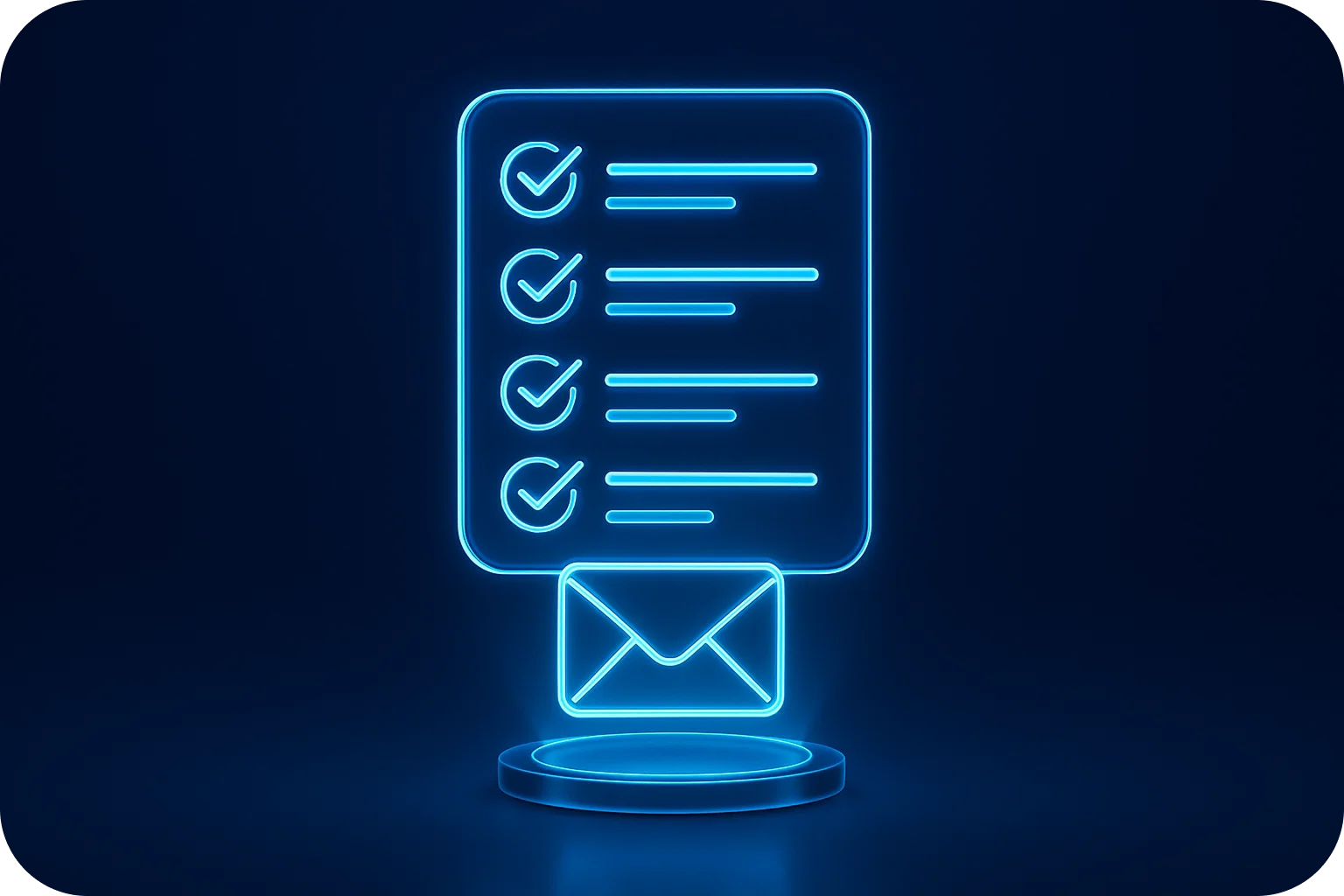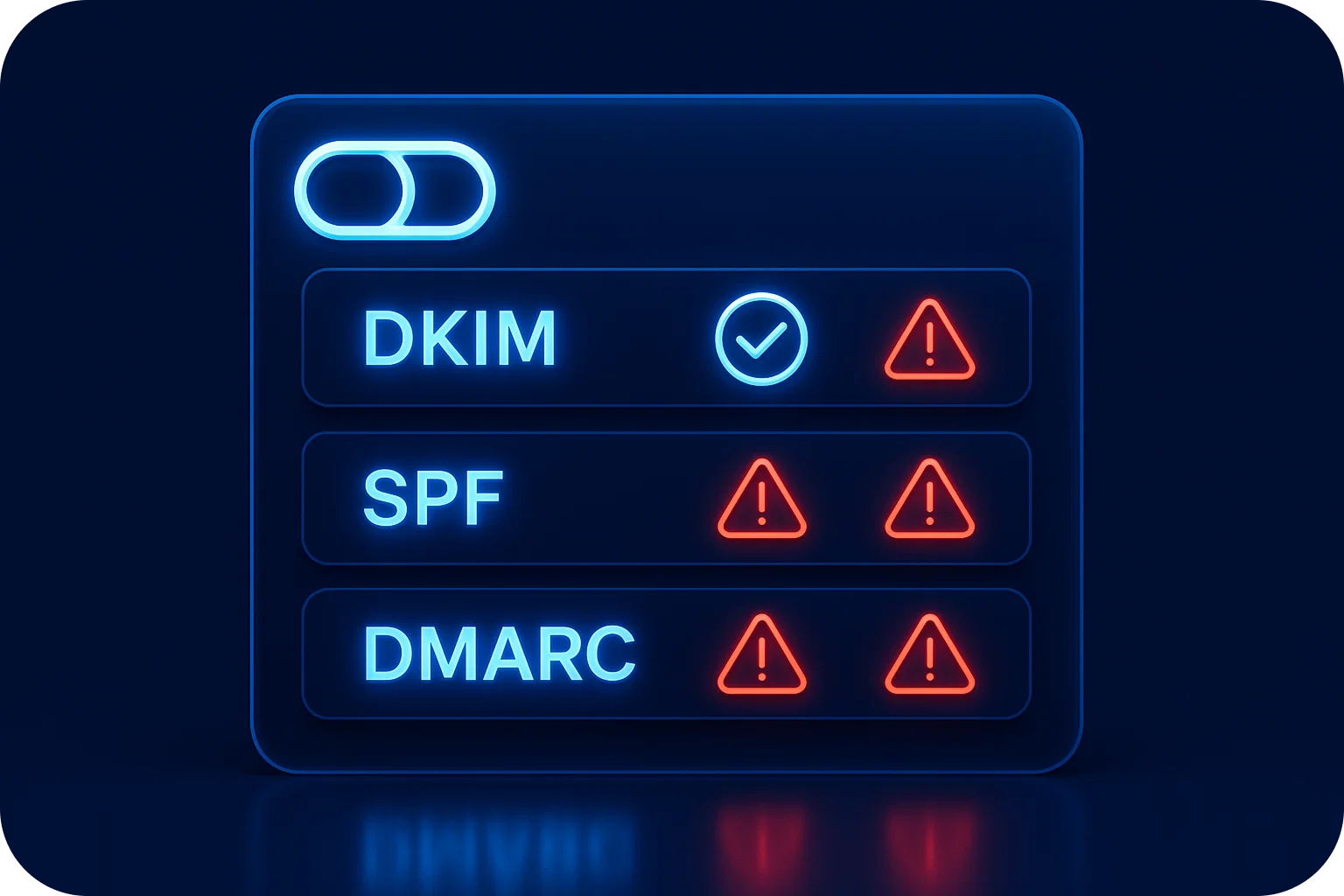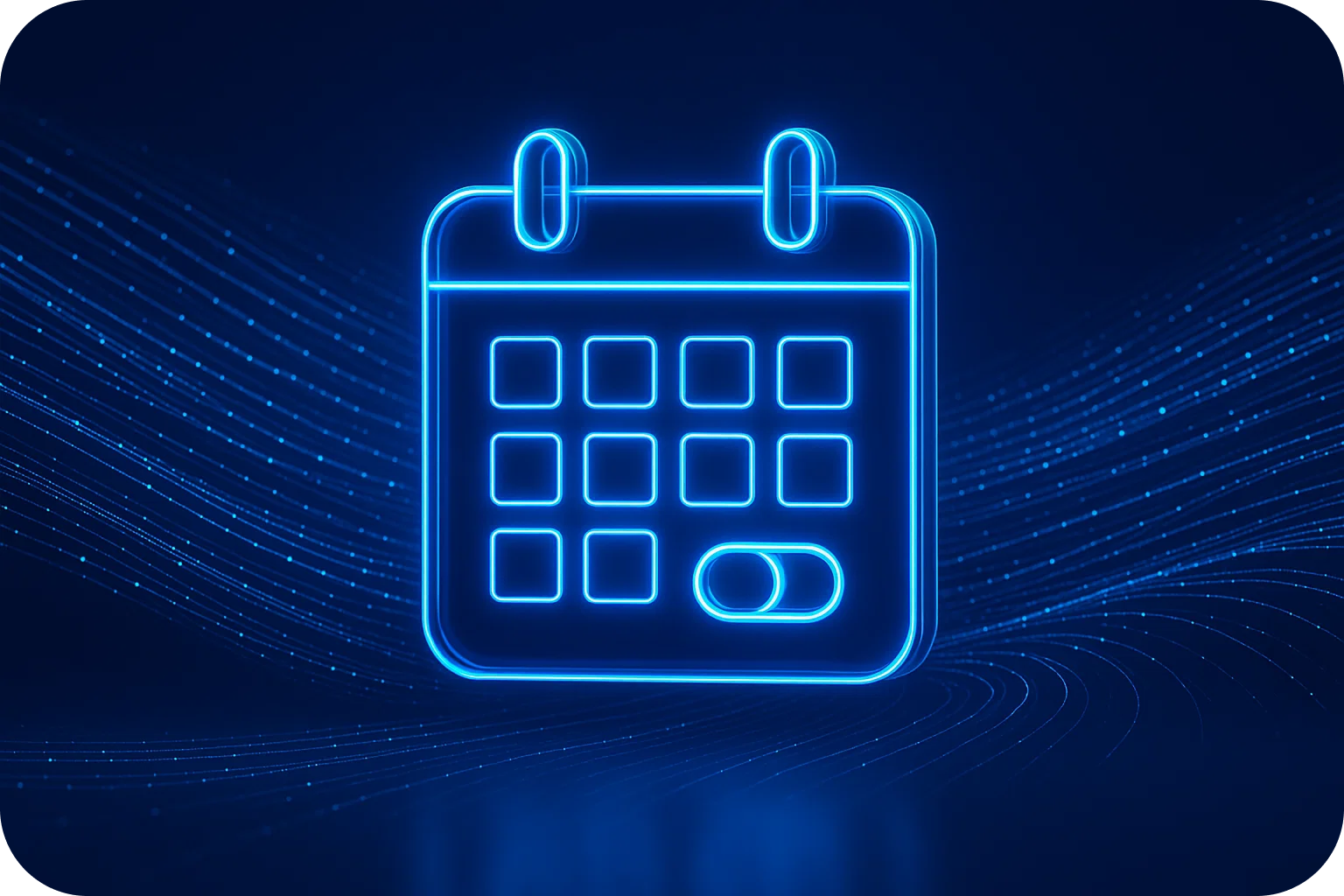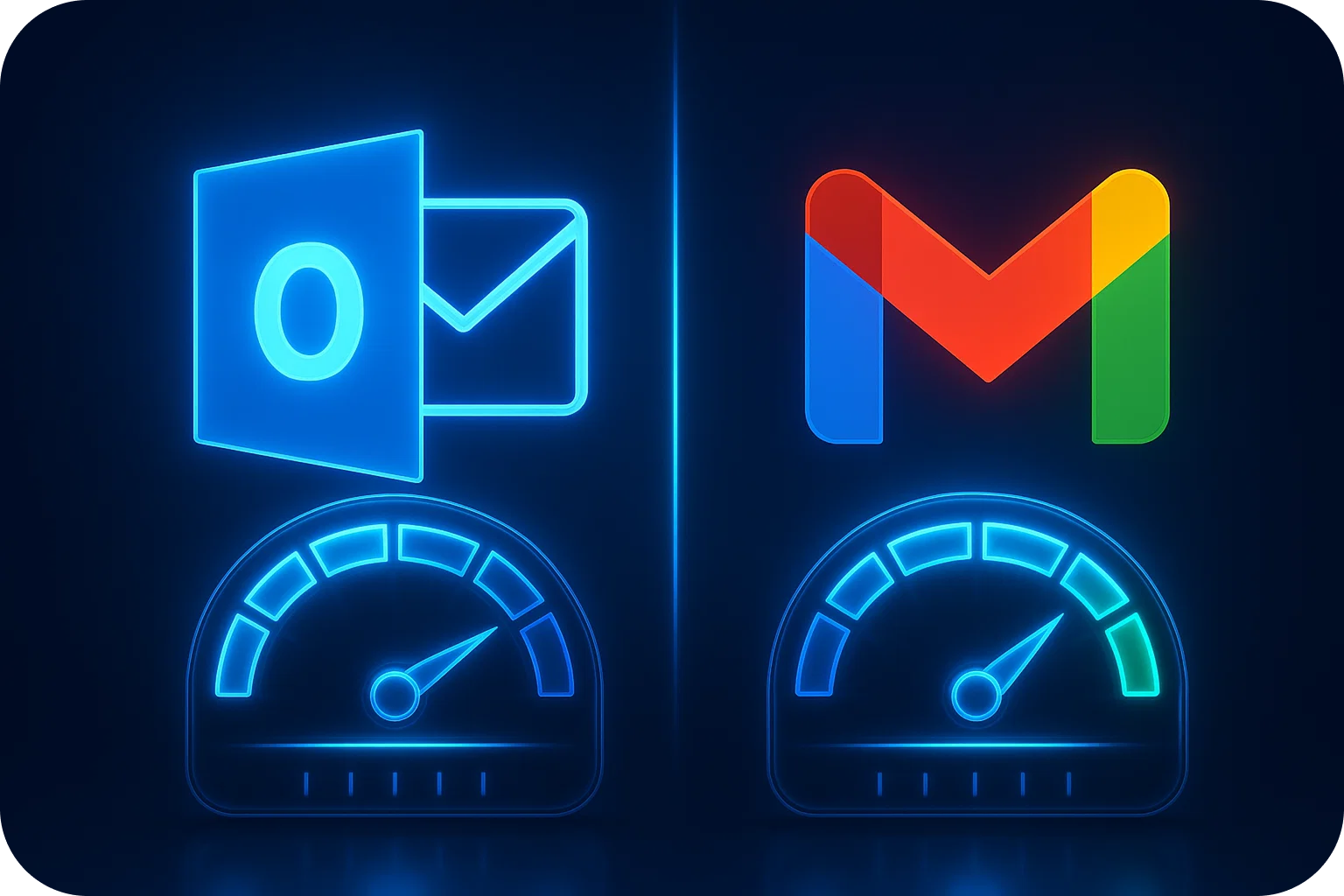From Setup to Send: Your 10-Minute Cold Email Infrastructure Checklist
.png)
Setting up cold email infrastructure used to be a weeks-long nightmare of technical configurations, DNS records, and deliverability mysteries. But what if we told you that with the right approach and tools, you could have a fully functional cold email system running in just 10 minutes?
Whether you're a startup looking to scale outreach or a sales team aiming to improve reply rates, this checklist will guide you through the essential steps to build an email infrastructure that actually delivers results.
Why Email Infrastructure Matters More Than Your Message
Before diving into the checklist, let's address the elephant in the room: why does infrastructure matter so much? You could craft the perfect cold email, but if it lands in spam folders, your efforts are wasted.
Here's what poor email infrastructure costs you:
- Low deliverability rates: Without proper setup, 70% of your emails might never reach the inbox
- Damaged sender reputation: Poor practices can blacklist your domains permanently
- Wasted resources: Time and money spent on campaigns that don't convert
- Missed opportunities: Potential customers you'll never reach
The good news? With modern email infrastructure platforms, you can avoid these pitfalls entirely.
The 10-Minute Cold Email Infrastructure Checklist
Step 1: Domain Strategy and Setup (2 minutes)
What you need: Multiple domains for sending
Never use your main business domain for cold outreach. Instead, purchase 3-5 similar domains that relate to your brand. For example, if your main domain is "company.com," consider:
- companyreach.com
- companyoutreach.com
- getcompany.com
Pro tip: Aim for 3-5 email accounts per domain maximum. This protects your sender reputation and allows for better volume distribution.
Step 2: Email Account Creation (2 minutes)
What you need: Professional email accounts across your domains
Create email accounts that look natural and professional:
- firstname@domain.com
- firstname.lastname@domain.com
- sales@domain.com
Avoid obvious cold email patterns like "outreach1@domain.com" or "coldmail@domain.com" – these trigger spam filters immediately.
Step 3: DNS Authentication Setup (3 minutes)
What you need: SPF, DKIM, and DMARC records configured
This is where most people get stuck, but it's crucial for email deliverability:
SPF (Sender Policy Framework): Tells receiving servers which IPs can send emails from your domain
DKIM (DomainKeys Identified Mail): Adds a digital signature to verify your emails aren't tampered with
DMARC (Domain-based Message Authentication): Provides instructions on handling emails that fail authentication
Manual setup can take hours and requires technical expertise. Modern email infrastructure platforms handle this automatically, ensuring perfect configuration every time.
Step 4: Email Warm-up Process (1 minute to initiate)
What you need: Gradual sending volume increase
New email accounts have zero sender reputation. Start with:
- Week 1: 5-10 emails per day per account
- Week 2: 15-20 emails per day per account
- Week 3: 25-30 emails per day per account
- Week 4+: Full sending volume (max 50 per day per account)
Automated warm-up tools can handle this process, gradually building your sender reputation while you focus on other priorities.
Step 5: Integration with Outreach Tools (2 minutes)
What you need: Connection to your preferred cold email platform
Your email infrastructure should integrate seamlessly with popular outreach tools like:
- Instantly
- Lemlist
- Smartlead
- Reply
- SalesHandy
Look for platforms that offer native integrations or API access for custom setups.
Advanced Infrastructure Considerations
Dedicated vs. Shared IP Addresses
For most startups and sales teams, shared IP addresses work perfectly fine and cost significantly less. However, consider dedicated IPs if you:
- Send more than 500,000 emails per month
- Need complete control over sender reputation
- Have specific compliance requirements
Email Provider Selection
Different email providers offer varying levels of deliverability and features:
Google Workspace: Excellent deliverability, familiar interface, robust security
Microsoft 365: Great for B2B outreach, strong enterprise features
Shared IP solutions: Cost-effective for high-volume sending
Monitoring and Analytics
Track these key metrics to ensure your infrastructure performs optimally:
- Deliverability rate: Aim for 95%+ inbox placement
- Open rates: Industry average is 20-25%
- Reply rates: Good cold email campaigns achieve 3-8%
- Bounce rates: Keep under 2%
- Spam complaints: Maintain under 0.1%
Common Infrastructure Mistakes to Avoid
The "Quick and Dirty" Approach
Using your main business domain for cold outreach is like playing Russian roulette with your brand reputation. One spam complaint can affect all your business communications.
Ignoring Volume Limits
Sending 500 emails from a new account on day one is a guaranteed way to land in spam folders. Respect the warm-up process.
Poor List Hygiene
Even perfect infrastructure can't save you from sending to invalid email addresses. Always verify your contact lists before sending.
Neglecting Mobile Optimization
Over 60% of emails are opened on mobile devices. Ensure your infrastructure supports responsive email templates.
Measuring Infrastructure Success
How do you know if your 10-minute setup actually works? Look for these indicators:
Week 1-2: Emails consistently reach inboxes (not spam folders)
Week 3-4: Open rates stabilize around industry averages
Month 2: Reply rates improve as sender reputation builds
Month 3+: Consistent performance with room to scale volume
Scaling Your Infrastructure
As your outreach grows, your infrastructure needs will evolve:
10-50 emails/day: Basic setup with 2-3 domains
50-200 emails/day: 5-10 domains with proper rotation
200+ emails/day: Advanced infrastructure with dedicated IPs and enterprise features
The key is building a foundation that can grow with your needs without requiring complete rebuilds.
The ROI of Proper Email Infrastructure
Let's put this in perspective with real numbers:
Poor infrastructure:
- 30% deliverability rate
- 1,000 emails sent = 300 delivered
- 2% reply rate = 6 responses
Optimized infrastructure:
- 95% deliverability rate
- 1,000 emails sent = 950 delivered
- 5% reply rate = 47 responses
That's nearly 8x more responses from the same effort. Over a year, this difference can mean hundreds of additional qualified leads and significant revenue growth.
Future-Proofing Your Email Infrastructure
Email deliverability standards continue to evolve. Stay ahead by:
- Monitoring industry changes and updates
- Regularly auditing your sender reputation
- Testing new authentication methods
- Maintaining clean, engaged contact lists
Ready to Build Your 10-Minute Email Infrastructure?
Setting up professional cold email infrastructure doesn't have to be complicated or time-consuming. With the right platform and approach, you can have a system that delivers 98% inbox placement rates and scales with your business growth.
The difference between successful cold email campaigns and failed ones often comes down to infrastructure. Don't let a poor setup sabotage your outreach efforts.
Want to see how easy it really is? Schedule your demo today to see how you can set up enterprise-grade email infrastructure in minutes, not weeks. Our platform handles all the technical complexity while you focus on crafting messages that convert.
More articles
Get started now




%201.png)





